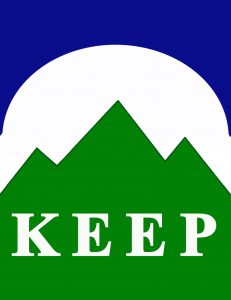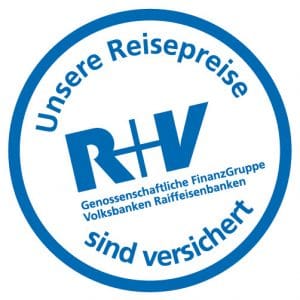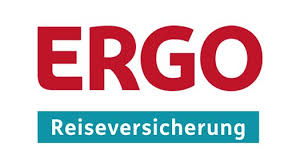The most frequently asked questions
What is the security like in Nepal for tourists?
Although Nepal is among the poorest countries in the world, its people are very warm, open and hospitable. Foreigners are usually treated with great respect. Crime is very low and there is no risk to “life and limb”. Nevertheless, we recommend certain precautions! Please note: Don’t openly carry money, jewellery and other valuables, always avoid crowds like demonstrations, and be vigilant in contact with strangers.
What languages are spoken in Nepal and how far will I get with English?
The country’s official language is Nepali (Nepalese). In tourist areas English is generally spoken and understood. In the countryside and remote areas, however, very little English is spoken. There you will be dependent on the help of your guide.
What if I don’t have all the equipment which is required?
In Kathmandu there are numerous shops selling trekking equipment. If you have forgotten to bring any equipment with you, it can easily be bought in Kathmandu. In addition to many counterfeited items of equipment and clothing it is nowadays also possible to find brands. Our local guides will be happy to help.
Can I rent equipment?
A quality sleeping bag can be rented from us for € 70.00. Everything else is provided by equipment hire organisations in Kathmandu. Our local guides will be happy to help. Please tell us in advance what you wish to hire. However, we recommend bringing high-quality category B/C trekking shoes from home and wearing them for a few weeks previously.
What do I have to take on a trek?
You shouldn’t take anything you don’t need into the mountains. We recommend carrying no more than 12 kilos. After booking, guests will receive a complete list of the equipment required for their particular trekking holiday.
What insurance will I need for the trip?
To ensure your own safety, it is one of our requirements that you take out travel health insurance (with recovery costs).
In the event of an accident or illness in the mountains which requires a helicopter rescue, the helicopter will not take off before the responsibility for the cost is clarified.
It is highly recommended to take out travel cancellation insurance. In the case of bargain price flights in particular, changes or cancellations generally can’t be made free of charge. In Nepal complications with the weather or with your health could make it necessary to break off your journey. The conclusion of comprehensive travel insurance is therefore strongly recommended.
As a woman can I travel alone in Nepal?
As a woman you will not be harassed in Nepal. You can go anywhere without experiencing any problems. The country is safe for women in general, and in trekking areas in particular the status of women is pretty good. Out of respect for the local culture you should avoid hot pants, mini skirts, low necklines and spaghetti straps. Bermuda shorts, however, are accepted. You should also keep a certain distance from Nepalese men.
After dark you should avoid secluded streets – as in any other country – and avoid going out alone.
Can I trek with children in Nepal?
Yes, you can do trekking tours in Nepal with your children. Tours with children will need extra rest days and we plan such trips very carefully.
Children older than 8 years can participate in most of our tours for beginners. Children under 8 years should not be at altitudes above 3.000 m. There is a risk that they will not be able to express their discomfort properly or describe the symptoms correctly. We will be happy to provide you with individual advice.
How should I behave in Nepal?
Nepal is a country which is different from our western countries and cultures. It is in many ways still untouched and pristine. The different religions, ceremonies, clothing, customs and practices may seem strange from our Western perspective. The infrastructure and standards, too, differ from ours. The Nepalese are a very warm, friendly and tolerant people. In contact with this culture and its people, tolerance, respect, understanding and openness are always the right way to behave. Some other basic Nepali customs that you should know are:
When visiting a temple, always circumambulate it in a clockwise direction
Take off your shoes before entering a temple or a Nepalese home
Entrance to some temples is forbidden, so look out for such notices
Seek permission to take photographs inside temples or of religious ceremonies
You can accept a handshake offered by either a male or a female but never offer your hand first
Tenderness between men and women in public should be avoided
Show decency in dress and avoid any show of public affection
What is the country code for Nepal?
The Country Code for Nepal is 00977 and the area code for Kathmandu is 01, for Pokhara 061, Chitwan 056 and Lumbini 071.
Should I feel uncomfortable if I hire a porter?
You may feel uncomfortable having your luggage carried by another person. But our western bodies are not accustomed to conditions in the Himalayas, which means that carrying 10 -15 kg on your back for several days or weeks can become very difficult. In order to enjoy a relaxing trek, the use of porters is indispensable.
Also, keep in mind that in Nepal work as a porter provides employment for many people. You will be providing a Nepalese with work which is well paid by Nepalese standards, and supports many families.
We make sure that our porters are treated fairly and carry no more than 25 kg.
What would be an appropriate tip for the mountain guides and porters?
If you are happy with their service we recommend allowing for around € 8 – 10 per guide per day and about € 6 – 8 per porter. Although our guides and porters receive a fair wage, it must be remembered that their work is seasonal. You can have a clear conscience that you will be providing additional support to families when you give a tip!
When is the best time to travel to Nepal?
There are different climates in Nepal due to the extreme altitude differences. You can generally assume that the temperatures and precipitation levels will decrease with increasing altitude. The best trekking time is in spring and autumn.
The spring season starts in March and ends in late May, with daytime temperatures of up to 22° C, although it may be a bit hazy. In April and May there are many places with wildflowers and rhododendron forests in full bloom, which lend a special atmosphere to the landscape.
The autumn season is from early October to late November, with daytime temperatures rising up to about 25° C, while the nights are somewhat colder. The view in autumn is clearer, and the landscape is bathed in a deep green by the previous downpours.
Hiking tours can even be undertaken in December and January. However, it may be particularly cold at night. But the sky is almost cloudless and far fewer hikers are under way.
How fit do I need to be to go trekking in Nepal?
In general, physical fitness and good health are always a prerequisite for trekking trips. The fitter you are, the more you will enjoy your trek. In addition to good physical condition, a positive attitude and a certain amount of willpower are required.
To help you select the right tour we have graded all our trips into categories.
If you don’t have any trekking experience, we recommend our tours in the category “treks for beginners”. For those who have already gained some experience with trekking at altitudes above 3,000 m and are physically fit, we recommend the “moderate to demanding treks” category. In the case of experienced hikers with good physical fitness we recommend tours in the “strenuous treks” category. If you are not sure which tour will be the best for you we’ll be happy to advise.
Before your trek, especially if you suffer from heart and circulation problems, we recommend a visit to your family doctor.
Where can I stay during the trekking trips?
Nowadays, there are teahouses/lodges on the most popular trekking routes. You can stay in these places in single or double rooms. They have basic facilities. You share the toilets and shower rooms with other trekkers. Generally speaking, you should get used to the simplicity of the accommodation pretty quickly, and the great experiences you’ll have and the uniqueness of the surroundings are sure to help. Indeed, the simplicity of the accommodation is part of the adventure, not to mention the fact it makes your wilderness experience even more intense.
There are now comfort lodges around Kathmandu, Annapurna and on the way to Everest Base Camp. These lodges have comfortable twin rooms with electric blankets and a private bathroom with a shower and toilet. The comfort lodges offer more comfort than you’ll find in the surrounding areas, and they are all in a beautiful location with a view of the mountains. Please note, though, that there are no comfort lodges located at an altitude of 4,000 metres and above. Up there we use the best available teahouses.
The camping and trekking trips give you the chance to experience nature at first hand. Most of our camping trips such as Upper Dolpo, Dhaulagiri, Kanchenjunga, Upper Mustang and Manaslu take place in remote areas. The advantage of these camping trips is also the fact that you will be in relatively untouched areas, and you’ll spend the night in tents located in the heart of nature. Camping trips are the ideal choice for adaptable, flexible and curious trekkers. Although these trips are a slightly more expensive option due to the porters, cook and support staff we have in addition to the guides, you will be rewarded in kind with intense wilderness experiences.
What kind of food is eaten in Nepal?
As in most Asian countries, rice is one of the staple foods in Nepal. One of the most popular and most regularly eaten foods in Nepal is dal bhat (dal = lentil, bhat = rice). For tourists it is generally served with various curried vegetables and spinach. Dal bhat is very tasty and nutritious. We recommend that you try it. Momos are also very popular. These are steamed dumplings filled with vegetables or meat, and are eaten with a spicy sauce. In addition, you can order any western dishes such as pasta, pizza, burgers, soups, etc. during your treks and other cultural tours.
Are there facilities for charging the batteries of mobile phone and cameras?
At most of the lodges / tea houses, it is possible to recharge your camera and mobile phone batteries for about 300 rupees. At higher altitudes from 4,000 m the facilities for recharging may be limited. We recommend carrying replacement batteries. At lower altitudes it is worth charging your batteries completely. During camping treks the options are very limited. We therefore recommend that you take enough spare batteries.
Do mobile phones function on trekking tours in Nepal?
Altough the network coverage in Nepal has improved a lot in recent years, it can happen in some places and especialy on treks that you will have connection problems with a European SIM card. You can buy a SIM card with a Nepalese number at low cost (200 rupees) which will provide you with a better and cheaper connection. Our guides will help you in choosing the right provider.
Can I trek in Nepal alone, without a mountain guide and porters?
You are strongly recommended not to trek alone without a local mountain guide. The health risks at high altitude are very high. In the event of an accident, illness or other natural disaster no one will know your precise location or be able to send you help. The high altitudes and the prevailing weather conditions also have to be taken seriously. It is also recommended that you should travel only with reputable agencies / tour operators. Your health and even your life should be important to you.
They say that trekking in Nepal can be addictive. What’s the reason for this?
The Himalayas exert a spell which has no equivalent anywhere else on earth. There you will experience the beauty of the mountains and their scenery, silence, peace and freedom. You also share many experiences with other trekkers from all around the world. You will discover a mysterious world which demands further exploration.





